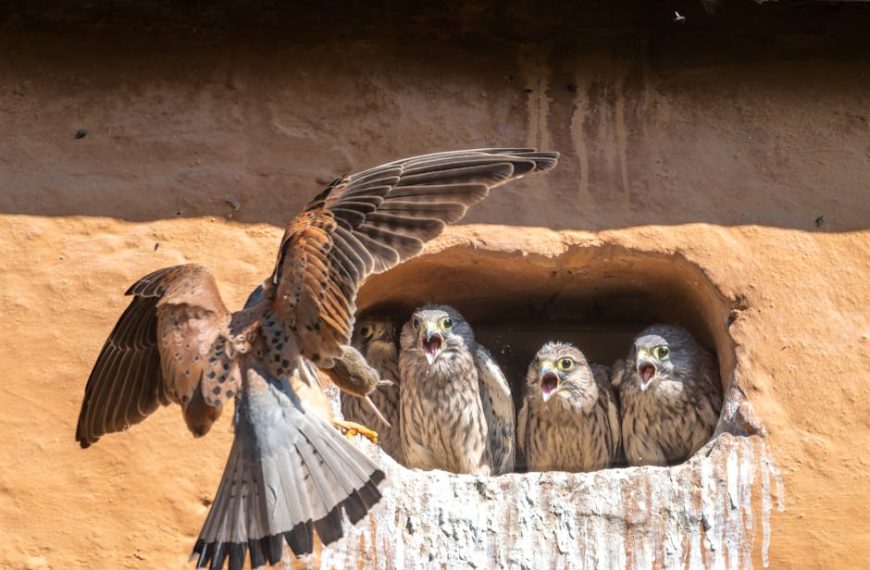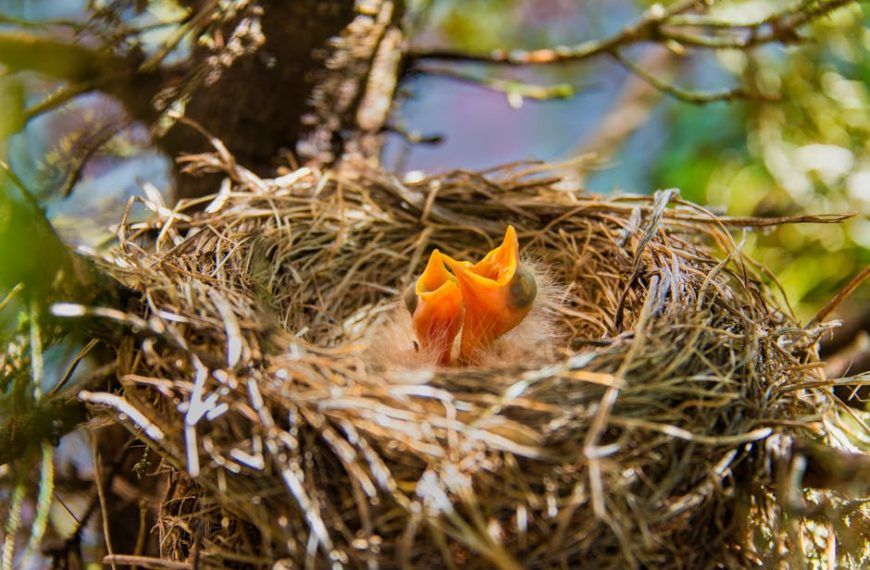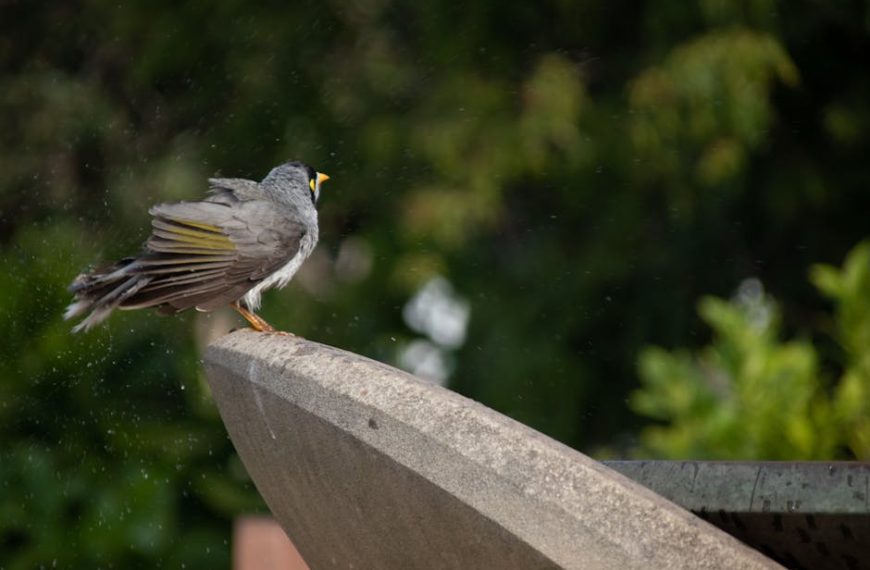Every spring and summer, countless songbirds weave intricate nests in trees, shrubs, and sometimes in less desirable locations like the eaves of houses or atop porch lights. These small wonders of architecture shelter eggs and chicks, providing a cradle until they are ready to take wing. But what happens when a nest’s location poses a threat to the birds or to human safety and there’s a need for it to be moved? Let’s delve into the various outcomes presented by such a scenario.
Understanding Bird Nests and Animal Laws
A bird’s nest isn’t just a simple structure of twigs, feathers, moss, and mud. It’s a work of brilliant avian architecture, painstakingly built and a refuge for avian families. Birds build nests for the purposes of breeding and rearing their young.
However, when human life intersects with avian life, conflicts can arise. For this, various laws are in place to protect the interests of birds and their habitats. For example, in the United States, the Migratory Bird Treaty Act makes it illegal to disturb any bird nests that are occupied, or contain eggs or chicks.
The laws may differ in other countries, with philosophies ranging from outright prohibition to flexible regulations. Therefore, it is crucial to investigate and understand your local wildlife laws before making any decisions or performing actions that could potentially disrupt bird habitats or life.
Pro Tip: Knowledge is power! Be informed about your local laws regarding wildlife before making any moves.
The potential consequences of moving a bird’s nest
Moving a bird’s nest might seem like a simple solution, but it can create many problems. Birds choose nests very strategically, based on safety, shelter and proximity to food sources. Disturbance to their nesting situations can lead to abandonment as the birds may view the disturbance as predatory behaviour.
Moving a bird’s nest also poses the risk of damaging the nest structure itself or harming eggs and chicks. These fragile components of the nest can be easily crushed or dropped during a relocation attempt. Additionally, moving the nest exposes the birds to predators and harsh weather, make taking such a step a risky endeavor.
Best Practice: If you find a nest in an inconvenient spot, it’s wise to contact wildlife professionals for advice before you make a move.
How Birds Respond to Disturbed Nests
Birds are incredibly instinctive creatures and they will respond to changes in their nests in different ways. Some birds might abandon a nest after it’s been disturbed while some may return, albeit grudgingly. The species of the bird, the time of the year, and degree of disturbance play notable roles in how birds respond to a nest being moved.
Through a careful analysis, weighted between pros and cons, disturbing a bird’s nest should be made with enough information to minimize harm. If a bird returns to a relocated nest, that will be a positive outcome of your intervention, but it’s always a gamble without any guaranteed outcomes.
Safest Alternatives to Moving a Bird’s Nest
Rather than taking the risk of moving a bird’s nest, there are alternative ways to manage a potentially problematic nest location. One option is to create a safe boundary around the nest, keeping kids and pets at a distance. Another is to simply remain patient and wait until the nesting season ends (which is usually only a period of a few weeks) before removing the nest.
Here are some recommendations:
- Block off or cordon a potentially hazardous area temporarily.
- Provide a shelter, such as an umbrella or makeshift cover if the nest is subject to elements like wind or rain.
- Contact a local wildlife rescue organization or animal control for advice and guidance.
Pro Tip: One of the most effective measures you can take is to create a bird-friendly environment in your backyard or garden, aiming to guide birds toward safer and preferred nesting locations.
When and How to Safely Move a Bird’s Nest
In certain cases, where human safety is at stake or if the nest is in mortal danger, moving a nest may be inevitable. If you find yourself in such a situation, it’s crucial to follow the right steps to minimize harm to the bird family and legally comply.
Here’s a short guide:
1. Find a safe new location as close to the original site as possible.
2. Gently remove the nest, ensuring its integrity remains intact.
3. Place it in a sturdy, sheltered area in the new location.
4. As much as possible, avoid touching the eggs or chicks with bare hands.
5. Monitor the nest from a distance to see if the birds return.
Checklist to ensure safety:
- Is the new nest safe from predators and harsh weather?
- Is the nest intact after the move?
- Are the eggs and chicks unharmed?
- Have you washed your hands thoroughly before and after the process?
Best Practice: When moving a nest, always prioritize the safety and well-being of the birds. Try to involve local wildlife authorities or bird rescue agencies in the process to ensure it’s carried out with the least disturbance possible.
Keep in mind that the information shared here is meant to provide a guiding hand and not promote nest moving. Bird’s nests should be moved only in extreme circumstances, and preferably under the guidance of professional wildlife rescuers, to ensure minimal disruption to our feathered friends’ lives.
Key Takeaway:
- Bird’s nests are integral to the survival and reproduction of bird species and should not be tampered with lightly.
- Various laws protect birds’ nests in different countries, and it’s crucial to be aware of these before deciding to move a nest.
- Moving a bird’s nest can result in abandonment, damage to the nest and eggs or chicks, as well as increased susceptibility to predators or harsh weather.
- Birds react differently to changes in their nests, largely depending on the species, time of year, and degree of disturbance.
- There are safer alternatives to moving a bird’s nest, like creating a safe boundary around it or waiting out the nesting season.
- If moving a nest is absolutely essential, it should be done with utmost caution, ensuring the new location is safe, secure and the nest is moved with as little disruption as possible.
The lives of birds deeply intertwine with ours, and respecting their habitats and nests ensures harmonious coexistence. If faced with a situation where a bird’s nest presents challenges, it’s best to consult with professionals. Remember, it’s our shared responsibility to protect these wonderful creatures and their remarkable nesting creations.
FAQs
Q: Are there any tools or equipment I should use when moving a bird’s nest?
A: This question highlights the importance of minimizing contact with the nest, eggs, or chicks. Using soft gloves and tools like a scoop or spade can help. However, always consult with a wildlife professional before making any decisions or actions.
Q: Can I place a bird’s nest inside the home or garage if it’s in danger outside?
A: Generally, this is not a good idea. Birds need access to natural light, fresh air, and need to be able to come and go freely. Consult with a local wildlife agency for guidance on your particular situation.
Q: How can I discourage birds from building nests in inconvenient places around my home?
A: Birds are attracted to certain types of sites for nesting. By making these sites less attractive, such as removing food sources or blocking access, you might discourage birds from nesting in inconvenient locations.
Q: The birds didn’t return after I moved the nest. What now?
A: Birds might take some time to feel safe returning to a moved nest. If they do not return, it’s possible they have abandoned that nest. In such instances, consult with a wildlife professional for advice.
Q: When does the nesting season typically end for most birds?
A: Nesting seasons can vary depending on the species and geographical location. Generally, many birds nest between early spring and late summer. There may be exceptions to this, so local birdwatching groups or wildlife agencies can provide more accurate information.
In case you found this information useful, kindly share this article with others and browse more of our posts to learn about diverse topics.












